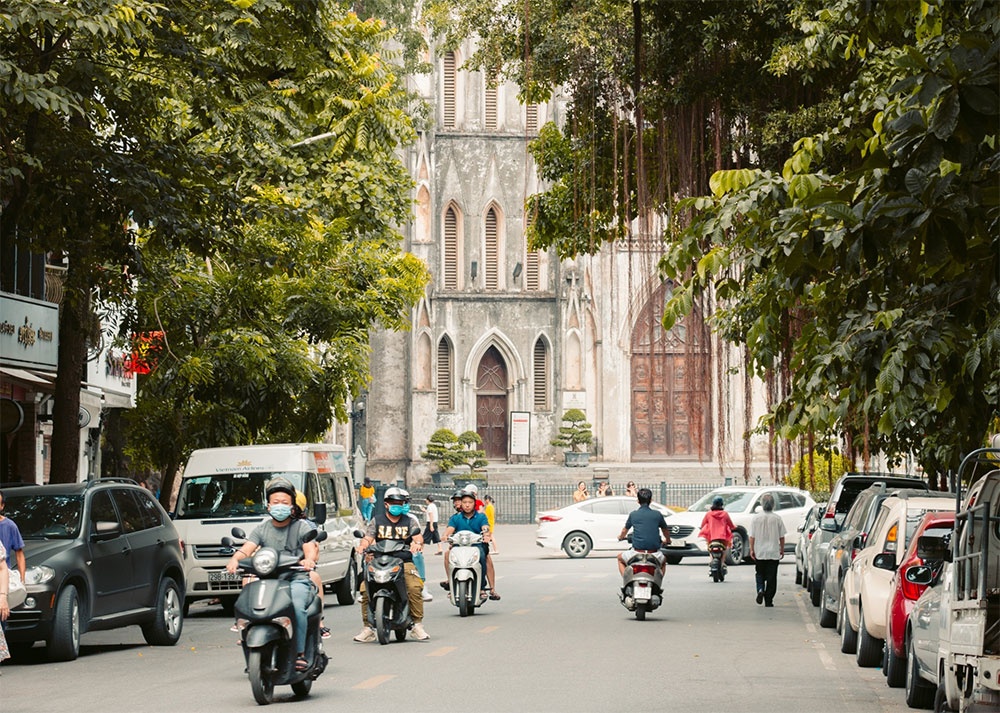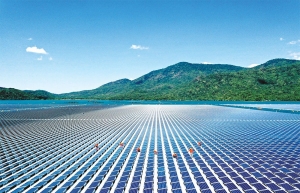Vietnam's economy remains a leading performer in Asia
In Q3/2022, Vietnam's GDP rose 13.7 per cent on-year (partly helped by a low base), thanks to a resilient external sector and robust domestic demand. That said, the growth outlook is now clouded by increasing trade headwinds.
After growing over 17 per cent on-year in the first three quarters of 2022, export growth sharply moderated in October, with November seeing the first meaningful on-year decline in two years. The primary drag came from electronics shipments, which account for 35 per cent of Vietnam’s total exports. That said, recent data show that export weakness is more broad-based, including textiles/footwear, wood and machinery products. In particular, the economic slowdown in the US has exacerbated woes, as the it is the largest market for many of Vietnam’s exports.
 |
| Vietnam's economy remains a leading performer in Asia |
On a positive note, domestic demand has come to a partial rescue, thanks to an ongoing recovery in its labour market. While the unemployment rate dropped to 2.3 per cent as of Q2 2022, there is still potential for a further decline, as many jobs are concentrated in tourism-related sectors. Although tourists have started to return, arrivals are still less than 20 per cent of 2019’s level.
Given lingering re-opening tailwinds, 2022 growth is likely to hit 8.1 per cent. However, challenges will likely be more acute in 2023, particularly after the re-opening effect fades and the impact of high inflation starts to kick in with a lag. Therefore, a more moderate 5.8 per cent growth is expected, the report said.
In addition, Vietnam has started to see stronger inflation pressures, with the latest data exceeding the State Bank of Vietnam’s 4 per cent “ceiling”. Not only has core inflation accelerated, but Vietnam has also seen a domestic energy shortage, keeping headline prices elevated.
"While we recently trimmed our inflation forecast slightly to 3.2 per cent (previously: 3.4 per cent) for 2022, we raised our forecast to 4.0 per cent (previously: 3.7 per cent) for 2023. This means the SBV will likely continue its tightening cycle," the report said.
Unlike regional peers, such as Malaysia and Indonesia, Vietnam has limited fiscal room to introduce immediate relief measures to alleviate the impact of high energy prices. Since April, the authorities have been cutting various taxes, including fuel and environment taxes.
To combat rising inflation pressures, the Ministry of Finance is seeking to extend the current environment tax cuts on various fuels until end-2023. This suggests that, while global oil prices may cool down in 2023, the authorities may opt to reinstate the environment tax as early as 2024. In addition, other energy prices may rise in 2023. Vietnam Electricity Group has recently filed for a price hike in 2023, the first major price adjustment in almost four years, citing high energy import costs.
On the monetary front, as the last ASEAN central bank to move, the SBV has been actively “playing catch up” in the face of a weakening VND and rising imported inflation. Starting in September, the SBV has delivered back-to-back rate hikes of 100 basis points each time, taking the refinancing rate to 6 per cent by the end of October.
For now, bolder rate hikes reflect more of a concern from external factors, such as the Fed’s rapid hiking cycle and FX volatility. Granted, external factors have turned more favourable in recent weeks, with the Fed likely slowing down its rate hikes and easing exchange rate pressure. However, rising core inflation increasingly suggests the SBV’s hiking cycle is still underway.
HSBC expect the SBV to raise its refinancing rate by 50 basis points each in Q1 2023 and Q2 2023, taking the refinancing rate to 7 per cent by mid-2023.
The biggest downside risk to Vietnam’s growth is intensifying trade headwinds. Vietnam is not immune to a notable global trade slowdown – in other words, “pay-back” time has arrived. Since the advent of the US-China trade tensions Vietnam has been one of the biggest beneficiaries in terms of both trade and FDI diversion, boosting its export share in the US market in particular. As a result, Vietnam has become increasingly vulnerable to a US economic slowdown, according to the report.
The other risk comes from upward pressures to energy prices. Despite petroleum prices falling below June’s peaks, they remain at elevated levels. To reduce the risk of potentially volatile onshore fuel inventories, the government has been directing domestic refineries and energy SOEs to plan to raise energy imports for at least the first half of 2023. This would likely squeeze Vietnam’s current account advantage, on the back of higher import bills.
Overall, Vietnam is still benefiting from re-opening, with retail sales up 17 per cent on-year in November. Although sequential growth is showing some signs of moderating, there is still room for a recovery.
International tourists reached just 16 per cent of 2019 levels as of November 2022. Expanding into new markets, such as India, will provide some support against a lack of mainland Chinese tourists.
However, external headwinds may weigh on the local labour market. Many workers have experienced cuts in working hours. The Vietnam General Confederation of Labor expects pressure on manufacturing employment to continue until mid-2023.
Weak goods export demand has already led to a marked decline in Vietnam’s exports, with November marking the first meaningful on-year decline in two years.
The manufacturing PMI in November was also in contractionary territory for the first time in 2022. New orders, selling prices, and employment all came in lower, highlighting negative sentiment.
Goods that benefited from strong demand during the pandemic, electronics and textiles/footwear, are seeing a “pay-back” period as demand shifts to services and global growth slows down.
The US and the EU encompass more than 40 per cent of total exports. Some major export categories are also dominated by the US, with almost half of Vietnam’s machinery exports sent to the US.
Another major export category highly exposed to US demand is wooden products (roughly 60 per cent). Slowing property market activity in the West has brought further downside risk to Vietnam’s exports.
However, not all is gloomy. Despite cyclical headwinds, firms continue to invest in Vietnam. Major electronics firms Samsung and LG both recently announced that they will be further investing in Vietnam, highlighting Vietnam’s long-term attractiveness.
 | The sustainable rise of viable investment across Asia With the steady rise in the number of climate-related companies and in their climate-related revenues, climate change has become more and more significant as a mainstream investment theme. Looking further into the data, we can see that the universe of climate solutions is getting bigger and greener with the growing Asia pivot. |
 | Apple to manufacture MacBooks in Vietnam next year Apple plans to begin producing MacBooks in Vietnam for the very first time next year as a part of its manufacturing diversification strategy amid rising tensions between the United States and China. |
 | Local-foreign tie-ups add to energy promise Foreign direct investment continues to play a key role in driving Vietnam’s transition towards renewable energy via greenfield investments, as well as the merger and acquisition channels. |
What the stars mean:
★ Poor ★ ★ Promising ★★★ Good ★★★★ Very good ★★★★★ Exceptional
Related Contents
Latest News
More News
- Vietnam’s green transition demands collective financial action (December 15, 2025 | 12:00)
- VIR workshop highlights capital and policy for sustainable development (December 15, 2025 | 11:00)
- National Assembly approves pilot mechanisms to accelerate major projects in Hanoi (December 12, 2025 | 11:29)
- Vietnam eases policy approval requirements, simplifies foreign and outbound investments (December 11, 2025 | 17:53)
- Unpacking new momentum in Vietnam’s M&A market (December 10, 2025 | 09:59)
- Forum honours outstanding M&A deals, strategies, and advisory firms (December 09, 2025 | 18:22)
- Vietnam enters defining phase of M&A growth (December 09, 2025 | 17:00)
- Vietnam’s M&A market opens new opportunities amid strong economic momentum (December 09, 2025 | 15:00)
- Vietnam M&A Forum 2025: new position, new momentum (December 09, 2025 | 14:30)
- FDI in Vietnam jumps on additional capital and share purchases (December 09, 2025 | 13:56)

 Tag:
Tag:






















 Mobile Version
Mobile Version